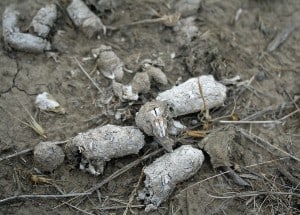Discovering coyote droppings in your yard may be alarming, but it’s important to take action quickly. Coyotes may seem cute, but they are actually dangerous carnivores that have been known to carry diseases like rabies. Even if they typically coexist peacefully with humans, it’s best to take precautions to prevent future encounters.
Farmers raising chickens, ducks, and other potential coyote food sources should also take measures to keep their poultry out of reach. Remember, coyotes can be a threat to small animals like cats and even dogs. Though they usually shy away from open confrontations with humans, it’s still wise to be vigilant, as they are known to visit yards at night.
Coyote Poop: Easy Identification Guide
Are you living in an area with a high coyote population? Don’t be surprised if these elusive creatures make an appearance in your backyard. But before you take action on how to get rid of coyotes, make sure you properly identify the culprit. Not all feces found in your yard belongs to coyotes. Learn how to spot coyote feces and take the appropriate measures to protect your property.”
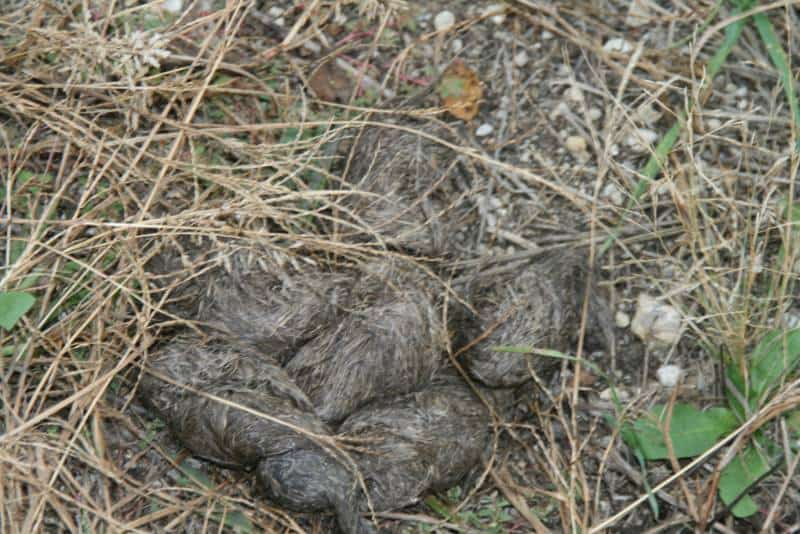
Coyote droppings identification
They are recognized among the feces of other animals. Usually, they contain hair and small bones of animals inside. Pay attention to the next factors:
- Size. On average, coyote dung is 4 inches long and close to 1 inch in diameter;
- The shape of the feces is oval. They are rope-like. Also, coyote feces are not soft, mainly because of the hair and bones inside;
- Color varies from the climate conditions they live at. It is dark during the winter period and bright during the summer. Old scat turns gray.
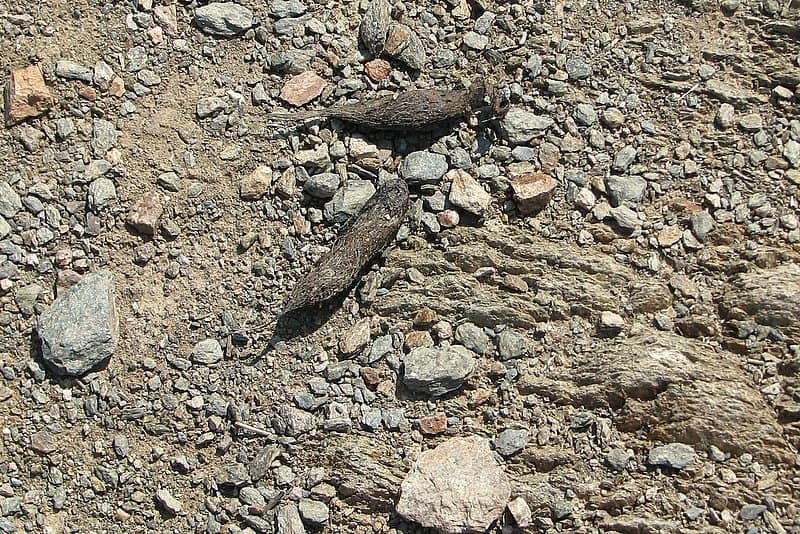
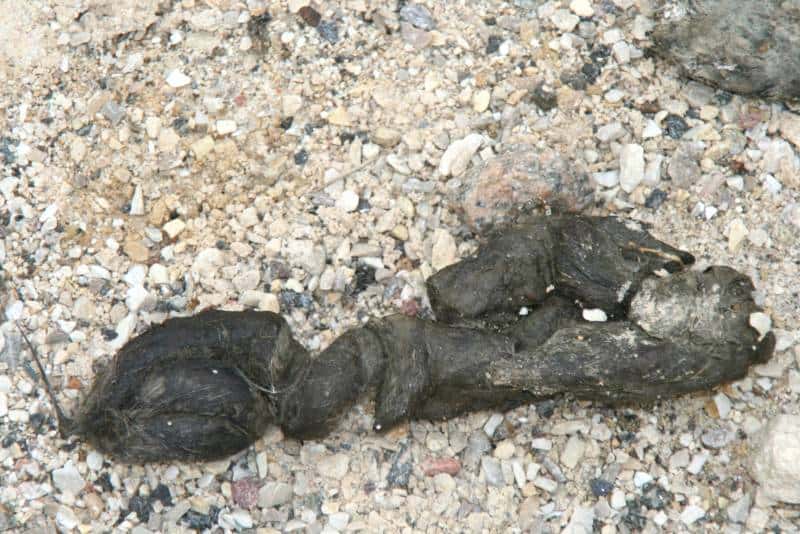
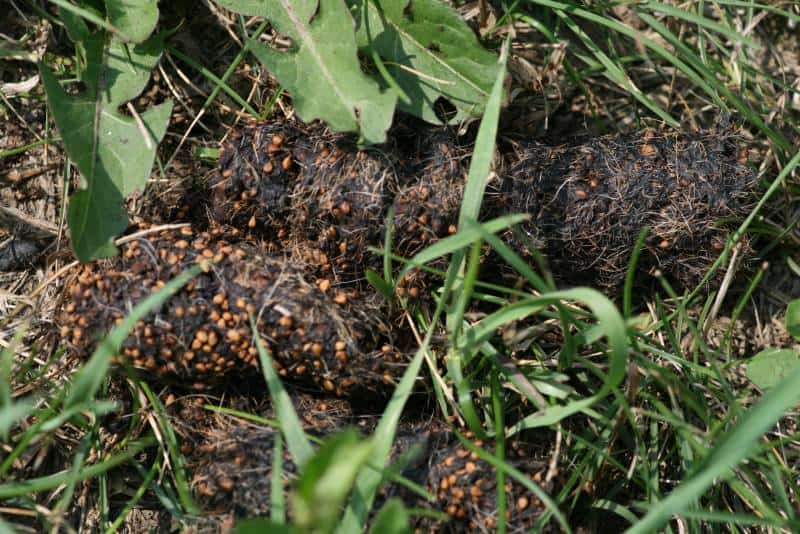
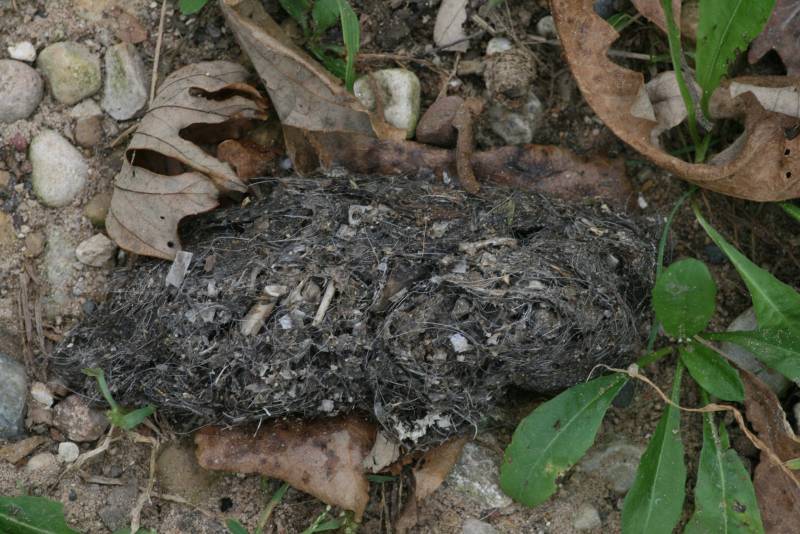
Coyote vs. other animals
Coyotes belong to the same group of canines as dogs and wolves. Their feces look similar to dogs. They are tubular and tapered at the ends. However, coyote poop in the yard is visibly different from the dog’s poop. Coyote’s scat is bigger and darker. Besides, the dog’s poop is soft.

Coyote scat dangers
Many residents in coyote-populated areas may be skeptical of the potential hazards, but it’s important to understand the risks. Coyotes may seem harmless, but their feces can carry deadly viruses and bacteria, including the dreaded tapeworm. In fact, 25% of coyotes carry this parasite, making it a serious threat to both animals and humans.
If you have pets that love to sniff and explore, it’s crucial to remove any coyote scat from your property immediately. Not only does it pose a risk for tapeworm, but it can also carry rabies and other deadly viruses.
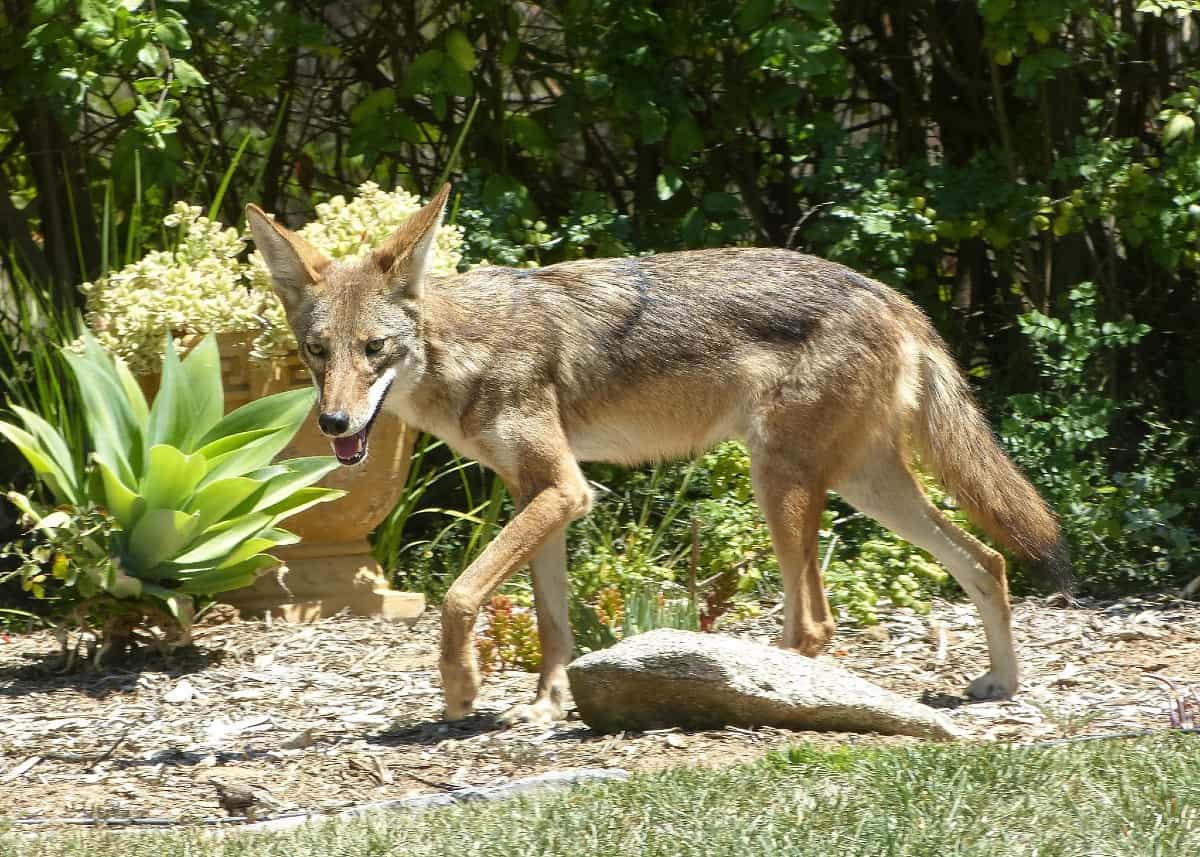
How to clean coyote feces
You may have already guessed from checking out numerous coyote poop pictures that they contain small particles that can also be dangerous to you. This is why you have to follow simple safety rules removing the feces from your yard.
Under no circumstances can you take a poop with bare hands. Don’t try to sniff it, and don’t put it close to your face or open skin. Use gloves, shovels, and bags to remove it. Here is a step-by-step instruction:
- Wear protective gloves and a respirator. You may also wear disposable boots or cover them with something disposable;
- Sprinkle warm water on the poop if it is dry;
- Take a shovel and remove the poop. Torch it, so the flame kills tapeworm;
- Disinfect the territory with the boiled water and disinfectant;
- Remove gloves and clean hands with soap and hot water. It is also recommended to wash your clothes after the procedure. Wash them separately from anything else.
Is it an infestation: Quick Checklist
One of the worst problems is that cysts can develop in the human body for years. Unless it is rabies, signs of infestations may not be revealed for a long time. Call the doctor in case:
- If you come into direct contact with the substance, as you see on coyote scat images, you need to consult with the doctor.
- If you have open wounds, the risks to get the disease are even higher.
- You will notice signs of virus infection in your body due to the high temperature, nausea, headache. Don’t ignore these signs.
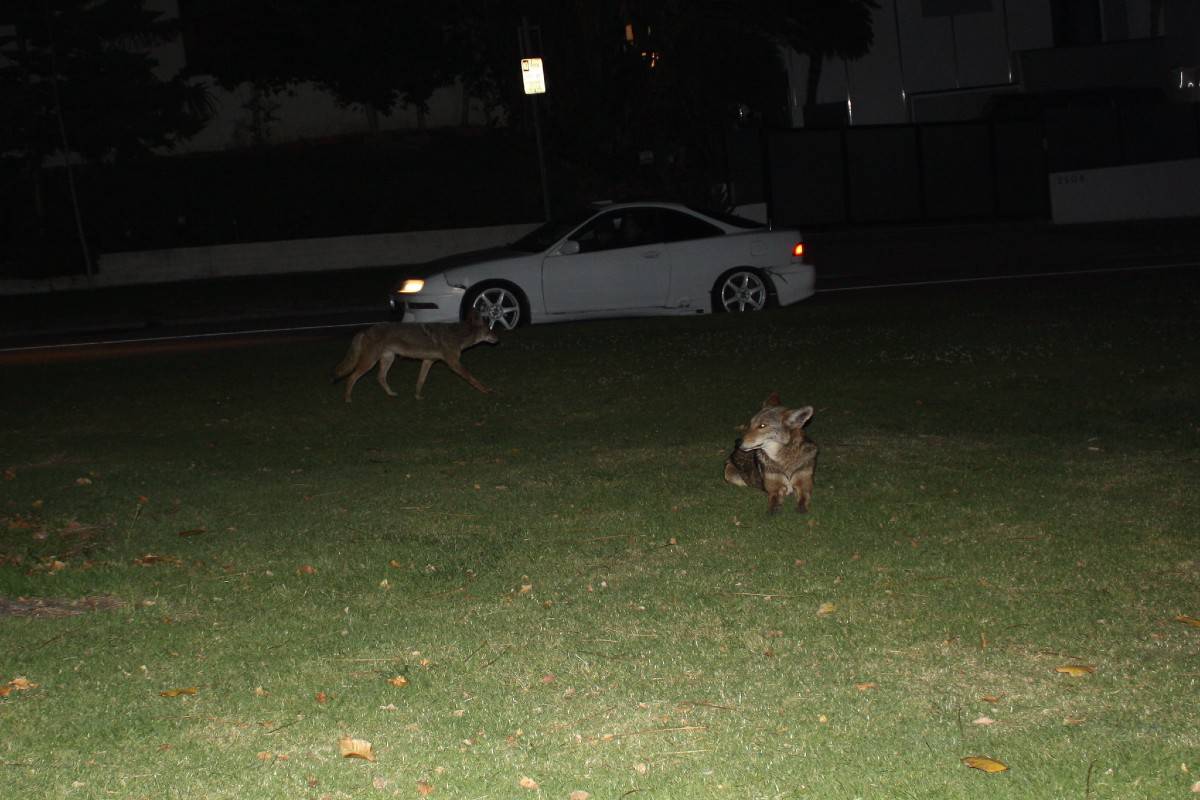
Avoiding the Danger
Coyotes are wild animals that can’t be controlled by humans. You can’t even predict their behavior in the next moment. However, there is a pattern in it. They come to the territories nearby, without fences, and mark them as their own, leaving scats on the ground.
This scat is dangerous, as it may be extremely contagious and contain deadly viruses and bacteria. You have to get rid of it before the coyote comes back to leave another one on the same territory. If you are visited by coyotes, share your personal remedies for dealing with them. Did you get rid of their visits?
References:
- Signs of Coyote presence (The Ohio State University):
https://urbancoyoteresearch.com/coyote-info/signs-coyote-presence - Solving Problems with Coyotes (The Humane Society of the United States):
https://www.humanesociety.org/sites/default/files/docs/HSUS%20Coyote%20Mgt%20Plan%202019.pdf

